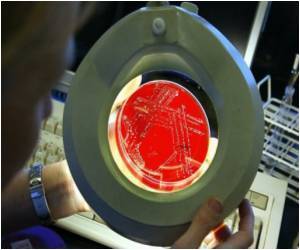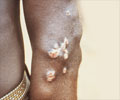
The manuscripts featured in Acta Cryst F discuss potential drug-targets from organisms that cause some of the world's deadliest diseases, including emerging pathogens and possible bioterror agents. One paper in the September edition features new insight into an iron-binding protein (called rubredoxin) from Mycobacterium tuberculosis, the bacterium that causes tuberculosis (TB), a disease which is responsible for nearly two million deaths annually. The new understanding of the protein's biological function revealed by this structure may speed up the development of new drug therapies urgently needed to prevent TB epidemics due to the recent emergence of multi drug-resistant (MDR) and extremely drug-resistant (XDR) strains.
Coccidioides immitis, a lesser-known organism featured in the SSGCID special edition, causes coccidioidomycisis or "Valley Fever" in the southwestern U.S. This sometimes-fatal disease can be contracted when a person breathes fungal spores from dust or dirt that has been disturbed by wind, and can cause fever, chest pain and coughing, among other more severe symptoms. The genome of C. immitis was sequenced recently, but very few of its proteins have been structurally characterized. The structures solved by SSGCID will increase the understanding of important enzymes involved in detoxification and nucleotide biosynthesis/salvage within this pathogenic fungus.
According to Myler, scientists from the SSCGID and its sister organization, the Center for Structural Genomics of Infectious Diseases (CSGID), which is led by Dr. Wayne Anderson of the Northwestern University Feinberg School of Medicine, gathered in Seattle in early August to review structures solved to date and determine priorities for the next year. "Between the two centers, we will solve over 1,000 structures by the end of 2012," said Myler. "With new information that is shared immediately through the NIH-supported Protein Data Bank (www.pdb.org), we are providing critical starting points for discovery and development of novel drugs, vaccines and diagnostics for a wide range of infectious diseases."
Source-Eurekalert















